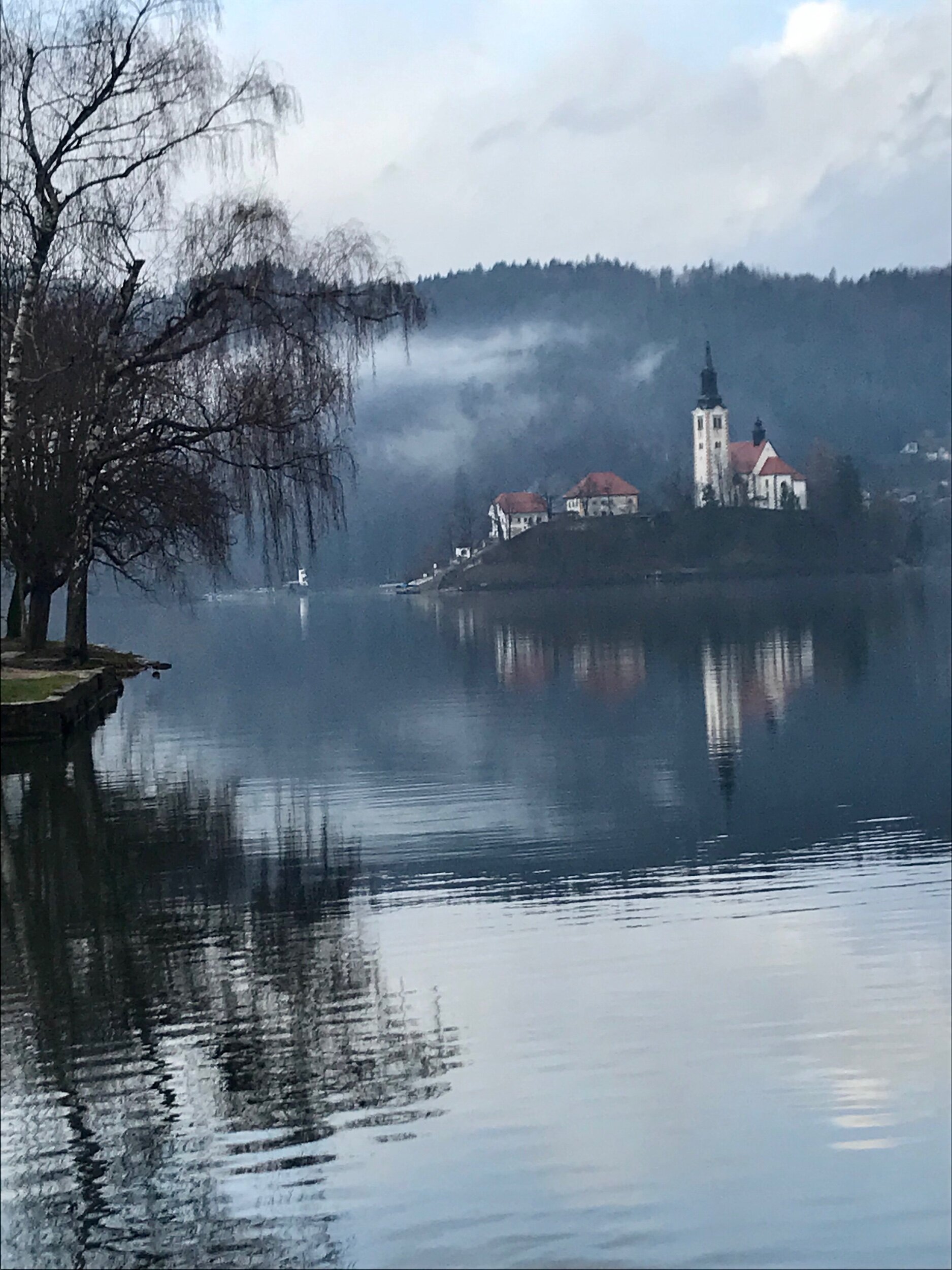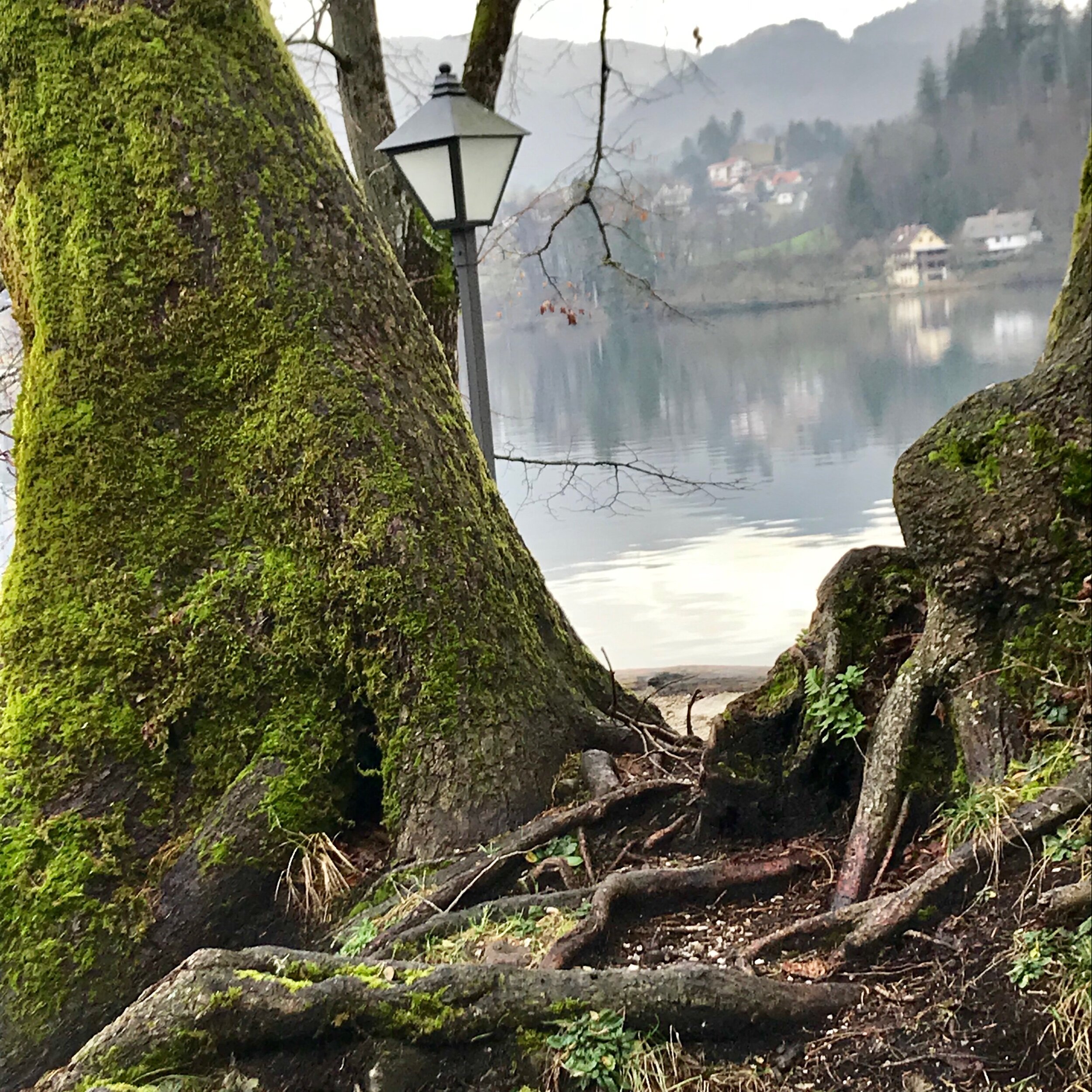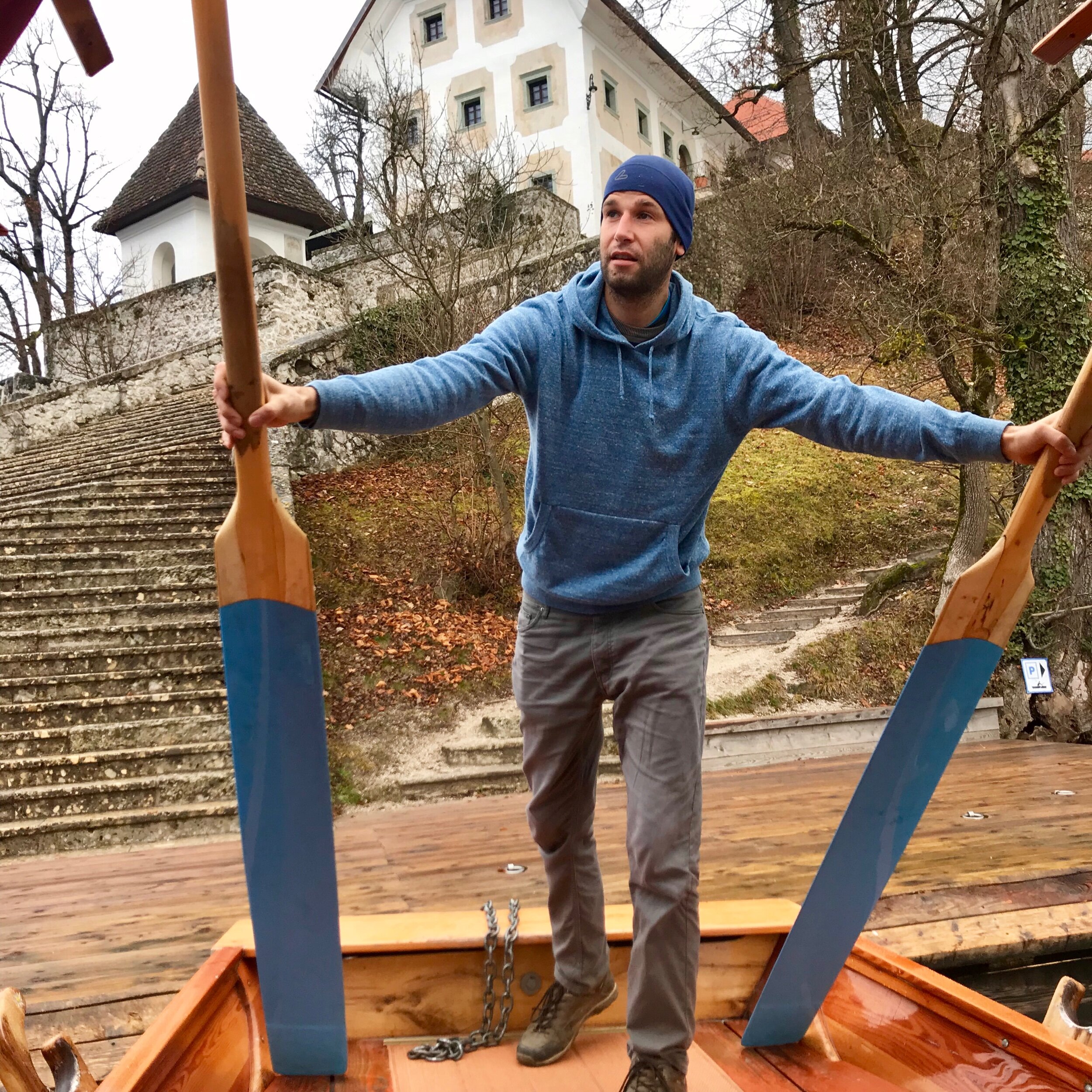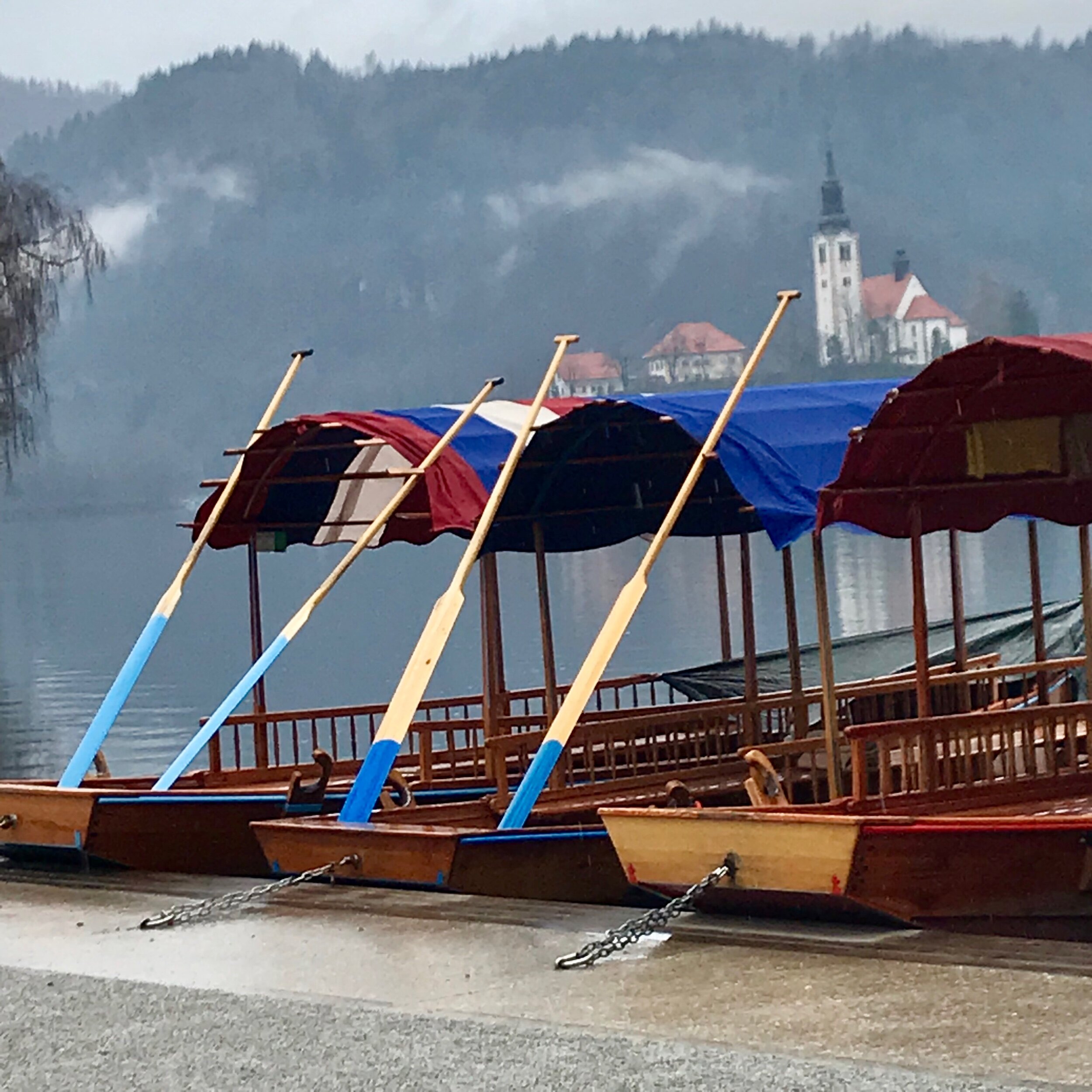For whom the oars row
If it wasn’t for the flat-bottomed pletna, we would have tipped for sure. Into Lake Bled, that is.
With the water temperature just above zero, I suspect our travelling companions - a Polish political scientist visiting Ljubljana on the Erasmus program, and an American PR person from Brussels - would not have been impressed.
We had been evenly placed in our pletna, two a side, mobile phones held like prayer books in our hands, waiting for the next revelation.
Pletnas are the Slovenian equivalent of Venice’s gondolas, colourful boats that have ferried tourists across this glacial lake for generations. Their flat-bottomed design, we’re told, provides stability and manoeuverability.
Within minutes of leaving shore we saw the perfect view: the Church of the Assumption and clock tower, floating on an island in the middle of the lake.
What a shot. Must get it now. Up I get, not thinking that a sudden seat change might have unforeseen consequences.
The Pole, the American and Malcolm grab their seats in horror. Our oarsman, meanwhile, makes a quick counter-move, instinctively shifting his weight so that the pletna stays afloat.
Last January, he says, when Lake Bled was almost frozen, a Korean woman dropped her phone in the water. Her friend leapt to its rescue, with disastrous consequences. The pletna tipped, and all aboard went over.
The Koreans and their oarsman survived. But it makes you wonder: what would happen if you were crossing the Styx, and one of your fellow travellers rocked the boat, then tipped it over? Would you end up in the Styx for all eternity, and is that a definition of limbo?
A day later, I ask Malcolm about his impressions of Lake Bled. He tells me about a Swiss symbolist, Arnold Böcklin, who painted several versions of Isle of the Dead.
Winter on Lake Bled brings such things to mind. There’s something about the low-lying cloud, the absence of summer pleasure-seekers, and the way in which a mossed-green tree at the base of the Church of the Assumption - which was built over an 8th century temple dedicated to the goddess of love - stands as a luminous sentry to the other world.



